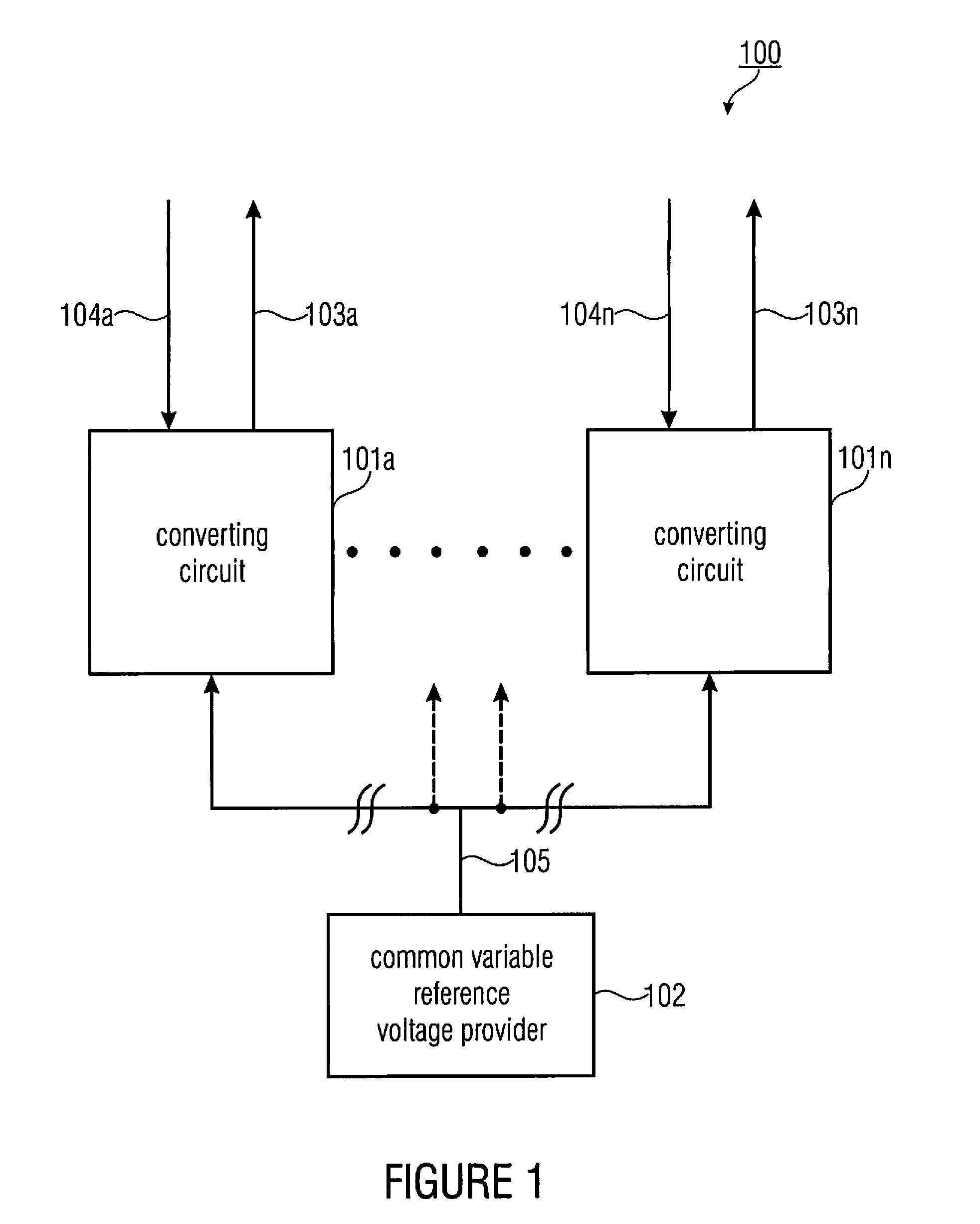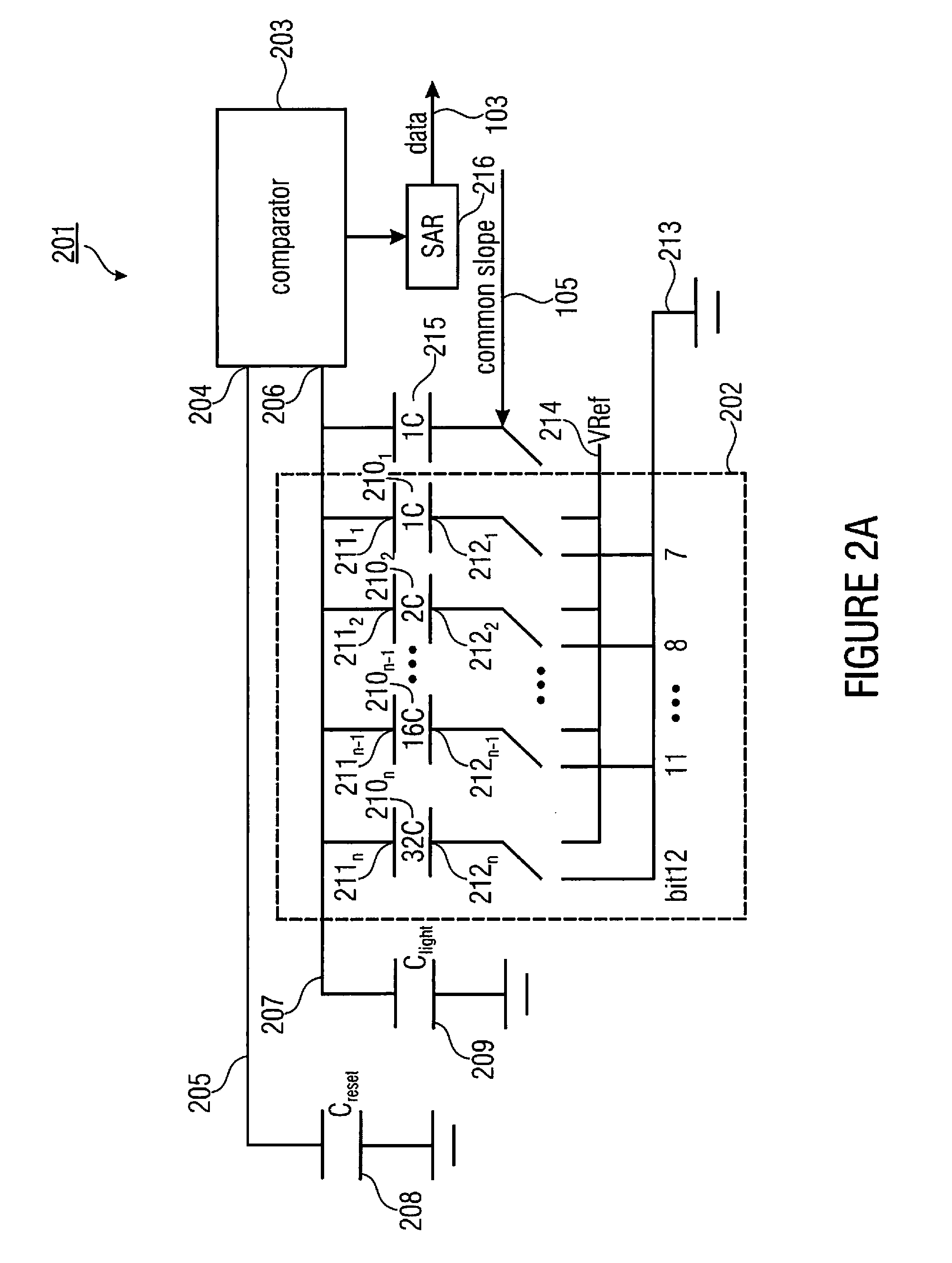Hybrid analog-to-digital converter, an image sensor and a method for providing a plurality of digital signals
a digital converter and hybrid technology, applied in analogue-digital converters, transmission systems, instruments, etc., can solve the problems of severe design demands for adc, large area and power requirements of adc, and large area requirements for adc, so as to reduce the area required for slope conversion in the converting circuit, improve the conversion rate to power and area ratio, and improve the effect of conversion speed
- Summary
- Abstract
- Description
- Claims
- Application Information
AI Technical Summary
Benefits of technology
Problems solved by technology
Method used
Image
Examples
Embodiment Construction
[0034]Before embodiments of the present invention are explained in greater detail in the following taking reference to the figures, it is to be pointed out that the same or functionally equal elements are provided with the same reference numbers, and that a repeated description of these elements will be omitted. Hence, the description of the elements provided with the same reference numbers is mutually interchangeable and / or applicable in the various embodiments.
[0035]FIG. 1 shows a block diagram of a hybrid analog-to-digital converter 100. The hybrid analog-to-digital converter 100 comprises a plurality of converting circuits 101a to 101n and a common variable reference voltage provider 102. Each of the converting circuits 101a to 101n is configured to provide a digital signal 103a to 103n based on an analog input signal 104a to 104n by performing a successive approximation conversion to obtain, as a result of the successive approximation conversion, a first number of bits of the d...
PUM
 Login to View More
Login to View More Abstract
Description
Claims
Application Information
 Login to View More
Login to View More - R&D
- Intellectual Property
- Life Sciences
- Materials
- Tech Scout
- Unparalleled Data Quality
- Higher Quality Content
- 60% Fewer Hallucinations
Browse by: Latest US Patents, China's latest patents, Technical Efficacy Thesaurus, Application Domain, Technology Topic, Popular Technical Reports.
© 2025 PatSnap. All rights reserved.Legal|Privacy policy|Modern Slavery Act Transparency Statement|Sitemap|About US| Contact US: help@patsnap.com



